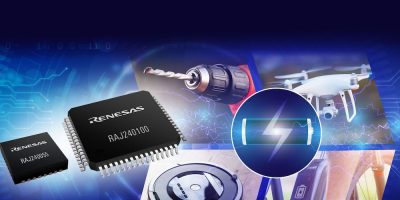Intel is unveiling its new Intel AI Edge Systems, Edge AI Suites and Open Edge Platform initiatives. These offerings help streamline and speed up AI adoption at the edge across industries such as retail, manufacturing, smart cities, and media and entertainment by simplifying integration with existing infrastructure.
With over 100,000 real-world edge implementations with partners, many leveraging AI today, Intel understands the unique challenges of edge AI. These challenges vary significantly by industry, with each having distinct performance and power needs. What works for cloud providers is not suitable for enterprises at the edge, which need to maintain existing platforms and software, while integrating AI, to get the best total cost of ownership (TCO) and power efficiency.
Unlike large data centres with dedicated AI infrastructure, edge AI deployments must seamlessly integrate into preexisting IT systems in space-constrained, low-power and cost-sensitive environments.
Intel AI Edge Systems, alongside Edge AI Suites and the Open Edge Platform, address these challenges by building on Intel’s pervasive technology foundation at the edge. These efforts empower the ecosystem to bring edge AI to market faster and more efficiently.
The open edge approach allows Intel to deliver better end-to-end performance and overall TCO in a variety of key industries. In an edge AI video analytics use case, tera operations per second (TOPs) alone don’t deliver real-world performance needs. When comparing Intel Core Ultra processors to leading AI competition, although competition may lead in TOPs, Intel delivers up to a 2.3x increase in end-to-end pipeline performance, and up to 5x better performance per dollar2.
While many edge deployments today incorporate AI using traditional machine learning and computer vision, Intel’s AI Edge Systems, Edge AI Suites and Open Edge Platform are designed to accelerate the deployment of advanced AI applications. Through a robust ecosystem of trusted partners, Intel enables enterprises to tackle industry-specific challenges and drive innovation in edge AI deployments.
Intel’s edge systems speed up AI deployment at the edge. Builders – original equipment manufacturers (OEMs) and original design manufacturers (ODMs) – have access to standardised blueprints, benchmarks and verification tools optimised for edge AI use cases. These resources enable customers and solution providers to easily configure systems to meet the performance needs of use cases like vision AI or generative AI (GenAI). With a range of power levels, sizes and performance options, these solutions ensure optimal integration of hardware and software.
Edge AI Suites: Edge AI Suites are open, industry-specific AI software development kits (SDKs) for independent software vendors (ISVs), system integrators and solutions builders. These suites simplify the creation of custom AI solutions for various industries by providing curated reference applications, sample code and benchmarks to accelerate application development. Currently, Intel offers four suites, optimised for retail, manufacturing, smart cities, and media and entertainment.
Open Edge Platform: The Open Edge Platform is a modular, open source platform that simplifies the development, deployment and management of edge and AI applications at scale. With cloud-like simplicity, this platform allows ISVs, solution builders and operating system vendors to integrate software components efficiently and leverage performance optimisations from Intel’s latest software advancements. Partners can easily deploy containerised workloads on remote edge devices — without the need for on-site visits — and manage these deployments with tools like Intel vPro®/Intel® Active Management Technology, enabling collaboration and innovation across the software ecosystem.







